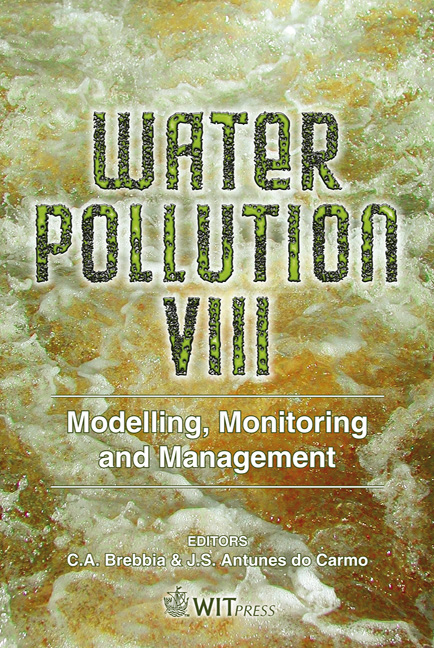Ecosystem And Assimilative Capacity Of Rivers With Control Structures
Price
Free (open access)
Transaction
Volume
95
Pages
10
Published
2006
Size
568 kb
Paper DOI
10.2495/WP060431
Copyright
WIT Press
Author(s)
E. Imam & S. El Baradei
Abstract
This research studies the impact of water level control structures on selfassimilative capacity of rivers and on their ecosystem. Constructing a water level control structure in a river reach will alter its hydraulics which will impact its water quality, thermal regime and fish habitat. A mathematical model is developed to simulate the river hydraulics, water quality, temperature, and fish habitat. The diurnal dissolved oxygen concentrations are investigated to see their impact on the fish. A case study of a Nile River reach was studied, to investigate the impact of the existence of the Esna barrage on the water quality in its upstream reach. The barrage has negative impacts on the upstream selfassimilative capacity of the rivers. The waste load that the river could take was only 54% from that load when there was no barrage and at low flow conditions. At high flow conditions this load changed to 78%. The diurnal DO variation was simulated and it was concluded that the diurnal photosynthesis has an effect on the diurnal cycle of the DO. The barrage has a positive effect on the fish habitat. The weighted usable area (WUA) of Tilapia fish is doubled in case of the barrage existence. The barrage causes a slight decrease in the water temperature. The average change in the diurnal temperature for the studied reach in the month of June is about 0.13ºC difference between the cases of existence and nonexistence of barrage. Keywords: self-assimilative (self-purification) capacity, hydraulic structure, mathematical modeling, dissolved oxygen concentrations, photosynthesis and respiration, fish habitat, thermal regime and water temperature.
Keywords
self-assimilative (self-purification) capacity, hydraulic structure, mathematical modeling, dissolved oxygen concentrations, photosynthesis and respiration, fish habitat, thermal regime and water temperature.





